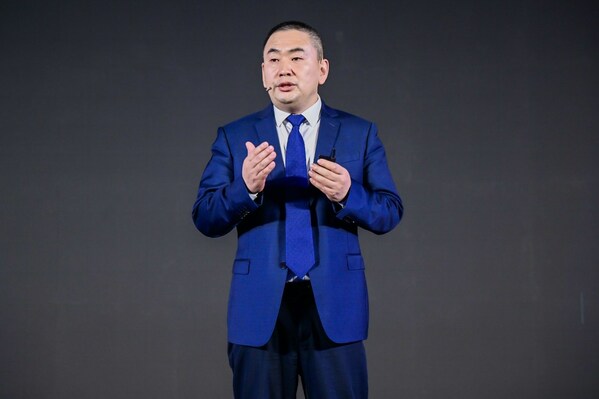OSAKA, Japan, Aug. 27, 2025 /PRNewswire/ -- A report from China Trade News.
In this August, inside the China Pavilion at the Expo 2025, the spotlight falls on the Niuheliang site of the Hongshan Culture, which is located in Chaoyang, Liaoning Province, the very birthplace of China's earliest astronomical calendar.
"Niuheliang is the cradle of Chinese civilization, confirmed by the 'Origins of Chinese Civilization' project as the foremost representative of the first phase of these archaic-state era," said Yin Xuhong from Niuheliang Site Administration. At the themed promotion session held as part of the Liaoning Week at the Expo on August 24, under Yin's guidance, the audience embarked on a historical journey spanning 5,000 years.
"The Hongshan people had already founded large-scale agriculture. Farming demanded close observation of the seasons and harmony with the nature. Thus this altar was born: three concentric circles that mirror the sun's path across the sky at the spring and autumn equinoxes and at the summer and winter solstices, while simultaneously encoding the ancient concept of 'three parts of Heaven and two parts of Earth.' It became China's earliest astronomical calendar," Yin explained, pointing to an image of the circular altar at Local 2 of the Niuheliang site.
According to Yin, the Hongshan Culture was a major Neolithic archaeological culture of the late period in northern China, stretching across Liaoning, Hebei and the Inner Mongolia Autonomous Region and covering a range of more than 300,000 km². The Niuheliang site in Chaoyang, Liaoning, is its most important representative. Solid archaeological evidence pushes the origins of Chinese civilization back to 5,800 years ago, lighting the dawn of Chinese history. The goddess statue unearthed at Niuheliang is honored as the primordial mother of the Hongshan people and the shared ancestor of all the Chinese, and is one of China's national treasures.
During the Liaoning Week, Shenyang Qiyuan Technology Co., Ltd. from the Science & Innovation Park of Shenyang Ligong University used cutting-edge naked-eye 3D holography to present key artifacts from Niuheliang, such as the head of the goddess statue, jade pig-dragons, and dragon-and-phoenix jade pendants without any physical objects. The immersive experience of traveling back to 5000 years drew gasps of amazement from the visitors.
Excerpts were also displayed from the article "Archaeological Discovery of the Jade Dragon of the Hongshan Culture", written by Dr. Liu Guoxiang, Vice President of the Chinese Academy of History and Director & Researcher of the China Archaeological Museum, published in the 2025 third issue of UNESCO Courier.
"The jade artifacts from Niuheliang share stylistic features with those from Lingjiatan and Liangzhu, revealing extensive cultural exchange and integration among the Liao River, Yellow River and Yangtze River basins more than 5,000 years ago. It was through continuous collision, exchange and fusion among many cultures that the pluralistic yet unified pattern of Chinese civilization was formed, sustaining an unbroken 5,000-year legacy," Yin noted. On behalf of the Niuheliang site, he extended a warm invitation to the world: "Welcome to Niuheliang! Welcome to Liaoning! Let's enjoy a journey of 5000 years about Chinese civilization!"












